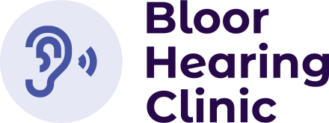
Our Blog
Tele-audiology, online hearing tests and virtual hearing test
My thoughts as one of the first audiologist to administer virtual care in Canada
This post isn’t about self-administered hearing tests patients do on their own online – I shall discuss that in another post. This post is on hearing test administered by audiologists.
In one of my previous jobs, I was lucky to be one of the first audiologist in Canada to perform tele-audiology and see firsthand the pros and cons of such a service delivery method. I gave remote hearing test virtually (a full diagnostic test which includes air conduction and bone conduction). During covid, most of us were stuck at home. Those who were hard of hearing had a difficult time during this period – their communication suffered due to others wearing masks, taking away facial cues and lip reading (some essential strategies those hard of hearing employ). With clinic shut down and people with hearing loss needing help, tele audiology entered the picture.
At that time, there were no guidelines, no clear instructions for how audiologists should proceed. The regulatory college just like the rest of us were grappling with the effect and implication of a global pandemic and what it meant to deliver health care. Virtual health care advanced very quickly during this time to address the need for delivering health services while social distancing.
I joined a private company during time to practice virtual care aka tele-audiology. The company utilized a novel idea. We screened patients exhaustively with health history taking to rule out red flags. Once they pass, we ship a compact ANSI compliant audiometer which has air conduction and bone conduction, video otoscopy, and have an audiologist administer the hearing test remotely on the patient.
This service quickly took traction. We served patients who lived in remote communities with limited access to audiology services, we served patients who had mobility issues, and served patients could not visit an audiologist due to clinic shutdowns. While virtual care helped some patients, there were challenges.
- The audiologist could not physically be with the patient, and rapport was hard to establish.
- Patients with dexterity problems were not able to handle hearing aid maintenance on their own. They needed a family member to be with them for the appointment and handling of the hearing aids.
- Patients with vision problem were not able to handle the hearing aids, unless someone is with them.
- Patients who are not familiar with computers or technology had trouble connecting to us for the appointment.
- We could not do custom aids as no ear mold could be taken
- Patients in remote communities may not have stable internet access.
- The process took longer than clinic appointments due to our large and careful list of medical history taking to ensure no red flag present before we even conduct hearing test.
In 2020, CASLPO released a standard to guide audiologists that intend to provide virtual care. This standard was timely and comprehensive, it addressed issues in this new development in audiology delivery model. Although today virtual care in audiology is no longer a novel idea, it is intended for a specific group of patients who could potentially benefit from it. An ideal virtual care patient is someone who
- Is savvy with technology
- Has good internet connection
- Has good dexterity
- Has good vision
- Is comfortable waiting for services
- Has age related SNHL hearing loss and no complications.
For those who lived in a remote community or has mobility constraints, virtual audiology is embraced. However, just like any virtual health care, it is with limitations. It is important for the clinician to identify the right candidate to provide services meeting standard of practice.
Consult our hearing test and professional ear cleaning service in Toronto today!
